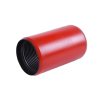- Afrikaans
- Albanian
- Amharic
- Arabic
- Armenian
- Azerbaijani
- Basque
- Belarusian
- Bengali
- Bosnian
- Bulgarian
- Catalan
- Cebuano
- Corsican
- Croatian
- Czech
- Danish
- Dutch
- English
- Esperanto
- Estonian
- Finnish
- French
- Frisian
- Galician
- Georgian
- German
- Greek
- Gujarati
- Haitian Creole
- hausa
- hawaiian
- Hebrew
- Hindi
- Miao
- Hungarian
- Icelandic
- igbo
- Indonesian
- irish
- Italian
- Japanese
- Javanese
- Kannada
- kazakh
- Khmer
- Rwandese
- Korean
- Kurdish
- Kyrgyz
- Lao
- Latin
- Latvian
- Lithuanian
- Luxembourgish
- Macedonian
- Malgashi
- Malay
- Malayalam
- Maltese
- Maori
- Marathi
- Mongolian
- Myanmar
- Nepali
- Norwegian
- Norwegian
- Occitan
- Pashto
- Persian
- Polish
- Portuguese
- Punjabi
- Romanian
- Russian
- Samoan
- Scottish Gaelic
- Serbian
- Sesotho
- Shona
- Sindhi
- Sinhala
- Slovak
- Slovenian
- Somali
- Spanish
- Sundanese
- Swahili
- Swedish
- Tagalog
- Tajik
- Tamil
- Tatar
- Telugu
- Thai
- Turkish
- Turkmen
- Ukrainian
- Urdu
- Uighur
- Uzbek
- Vietnamese
- Welsh
- Bantu
- Yiddish
- Yoruba
- Zulu
Seating Strategies for Efficient Pump Nipple Installation and Maintenance Techniques
Understanding the Pump Seating Nipple A Key Component in Oil and Gas Production
In the oil and gas industry, efficiency and reliability are paramount. One critical component that enhances the performance of production systems is the pump seating nipple. This specialized device plays a vital role in the operation of downhole pumping systems, especially in oil wells and other subsurface applications.
What is a Pump Seating Nipple?
A pump seating nipple is a specialized apparatus installed within the tubular string of an oil well. Its primary function is to provide a secure base for the installation of a downhole pump, typically a rod pump, which is responsible for lifting oil from subsurface reservoirs to the surface. The design of the seating nipple allows for easy attachment and detachment of the pump, which is essential for maintenance activities and operational flexibility.
These nipples come in various designs and sizes, depending on the specific requirements of the well and the type of pump being used. They are engineered to withstand high pressures and corrosive environments, making them durable and reliable under challenging conditions. The materials used in manufacturing pump seating nipples are typically high-strength steel or other alloys that can resist deformation and wear.
Importance of the Pump Seating Nipple
The pump seating nipple serves as the foundation for the pump assembly, influencing the overall efficiency of the pumping operation
. An improperly installed or faulty nipple can lead to significant production losses due to pump failure or inefficiencies such as gas locking, which can prevent optimal oil recovery from the reservoir.pump seating nipple

Additionally, the seating nipple enables the proper alignment of the pump within the wellbore. This alignment is crucial for ensuring that the pump operates smoothly and that the maximum amount of oil is lifted without causing damage to the equipment or creating additional wear on the wellbore itself.
Installation and Maintenance
The installation of a pump seating nipple typically involves several steps, including the preparation of the wellbore, careful placement of the nipple, and secure connection to the pump. It is essential for operators to follow best practices during installation to avoid complications that could lead to increased downtime or costly repairs.
Maintenance of the pump seating nipple is equally important. Operators should regularly inspect the nipple for any signs of wear, corrosion, or damage. Routine checks allow for early detection of potential issues, ensuring that the pumping system remains operational and efficient. If any problems are identified, it may be necessary to replace the nipple or perform repairs to avoid affecting the entire production system.
Innovations and Future Developments
As technology advances, the design and functionality of pump seating nipples are also evolving. Innovations in materials science have led to the development of new alloys that are even more resistant to corrosive conditions. Moreover, the integration of smart technologies allows for real-time monitoring of the pump and seating nipple, enabling predictive maintenance that can further enhance the efficiency of oil extraction processes.
In conclusion, the pump seating nipple is a crucial component that ensures the effective operation of downhole pumps in the oil and gas industry. Its role in securing the pump, maintaining alignment, and facilitating easy access for maintenance cannot be overstated. As the industry continues to innovate, the performance and reliability of these nipples will undoubtedly be enhanced, leading to improved production rates and reduced operational costs. Understanding and optimizing the use of pump seating nipples will be essential for operators striving to maximize their extraction efficiency and maintain competitive advantage in the dynamic world of oil and gas production.
-
Tubing Pup Joints: Essential Components for Oil and Gas OperationsNewsJul.10,2025
-
Pup Joints: Essential Components for Reliable Drilling OperationsNewsJul.10,2025
-
Pipe Couplings: Connecting Your World EfficientlyNewsJul.10,2025
-
Mastering Oilfield Operations with Quality Tubing and CasingNewsJul.10,2025
-
High-Quality Casing Couplings for Every NeedNewsJul.10,2025
-
Boost Your Drilling Efficiency with Premium Crossover Tools & Seating NipplesNewsJul.10,2025







